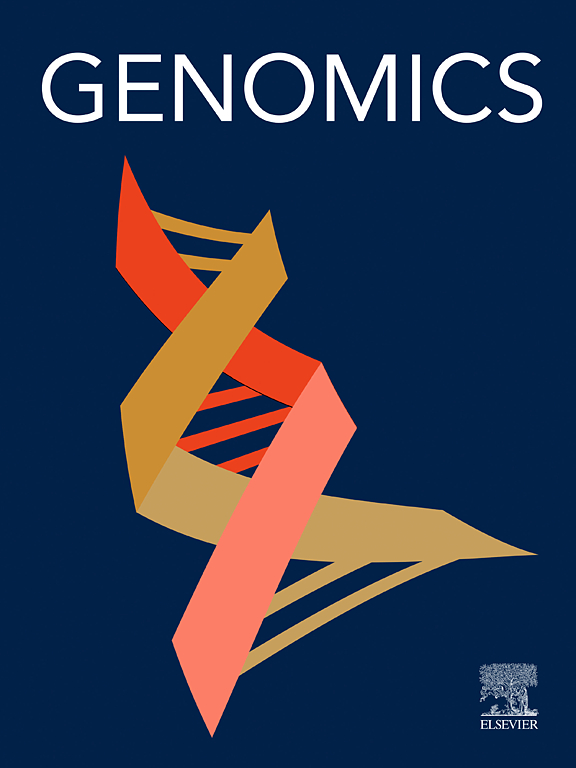Genotypic and phenotypic characteristics of group B streptococcal isolates from neonates in a tertiary hospital in Qingyang, Gansu Province, China
IF 3
2区 生物学
Q2 BIOTECHNOLOGY & APPLIED MICROBIOLOGY
引用次数: 0
Abstract
Group B Streptococcus (GBS) causes severe neonatal infections, leading to high mortality rates. This study aimed to investigate the genetic characteristics of GBS isolates in a hospital setting. Nineteen isolates were identified through a review of preservation and cultivation processes since January 2022, followed by antibiotic susceptibility testing. Whole-genome sequencing (WGS) was used to investigate genetic relationships. Among 19 isolates, serotype V was the most prevalent (n = 7), followed by Ib (n = 6) and III (n = 6). Genomic sequence analysis revealed that 19 isolates belonged to four sequence types (STs) related to four clonal complexes (CCs), namely CC12, CC19, CC327, and CC452. The isolates exhibited high resistance rates to erythromycin (89 %, n = 17), levofloxacin (79 %, n = 15), clindamycin (68 %, n = 13), and tetracycline (53 %, n = 10). The mreA gene was found in all GBS isolates (100 %), while the most prevalent resistance gene was ermB (84 %). Furthermore, the fbsB virulence gene associated with adherence was identified in four serotype V/ST890 GBS isolates. Two isolates with different sequence types (ST10, ST19) were found to have undergone parallel mutations in the gene SE858_09425, which encodes a DNA translocase FtsK. Both exhibited an I259L substitution in a conserved ligand-binding domain, strongly suggesting this site is critical for adaptive evolution.
Importance
Group B Streptococcus (GBS) is a major pathogen causing severe neonatal infections, such as sepsis and meningitis, with high mortality and morbidity rates. The rising antimicrobial resistance of GBS presents significant challenges for clinical management. This study investigates 19 GBS isolates isolated from neonates in Qingyang, Gansu, focusing on their genetic characteristics and resistance profiles through molecular epidemiological analysis and WGS. The findings offer critical insights into the molecular mechanisms of GBS infections, which can inform infection control measures, improve prevention strategies, and optimize antimicrobial therapies to enhance neonatal healthcare outcomes.
甘肃省庆阳某三级医院新生儿B群链球菌分离株基因型和表型特征
B群链球菌(GBS)引起严重的新生儿感染,导致高死亡率。本研究旨在调查医院环境中GBS分离株的遗传特征。自2022年1月以来,通过审查保存和培养过程,鉴定出19株分离株,随后进行抗生素敏感性试验。全基因组测序(WGS)用于研究遗传关系。19株分离株中以血清型V型最多(n = 7),其次是血清型Ib (n = 6)和血清型III (n = 6)。基因组序列分析显示,19株分离株分别属于与CC12、CC19、CC327和CC452 4个克隆复合物相关的4种序列类型(STs)。红霉素的分离表现出高电阻率(89 % n = 17),左氧氟沙星(79 % n = 15)、克林霉素(68 % n = 13),和四环素(53 % n = 10)。在所有GBS分离株中均发现mreA基因(100 %),而最常见的耐药基因是ermB(84 %)。此外,在4个血清型V/ST890 GBS分离株中鉴定出与粘附相关的fbsB毒力基因。两个不同序列类型的分离株(ST10、ST19)在编码DNA转位酶FtsK的基因SE858_09425上发生了平行突变。两者都在一个保守的配体结合域上显示了I259L的取代,这强烈表明该位点对适应性进化至关重要。重要性:B群链球菌(GBS)是引起新生儿严重感染的主要病原体,如败血症和脑膜炎,具有高死亡率和发病率。GBS耐药性的上升给临床管理带来了重大挑战。本研究对甘肃庆阳地区分离的19株GBS新生儿分离株进行了分子流行病学分析和WGS分析,探讨了其遗传特征和抗性谱。这些发现为GBS感染的分子机制提供了重要的见解,可以为感染控制措施提供信息,改进预防策略,并优化抗菌治疗以提高新生儿保健结果。
本文章由计算机程序翻译,如有差异,请以英文原文为准。
求助全文
约1分钟内获得全文
求助全文
来源期刊

Genomics
生物-生物工程与应用微生物
CiteScore
9.60
自引率
2.30%
发文量
260
审稿时长
60 days
期刊介绍:
Genomics is a forum for describing the development of genome-scale technologies and their application to all areas of biological investigation.
As a journal that has evolved with the field that carries its name, Genomics focuses on the development and application of cutting-edge methods, addressing fundamental questions with potential interest to a wide audience. Our aim is to publish the highest quality research and to provide authors with rapid, fair and accurate review and publication of manuscripts falling within our scope.
 求助内容:
求助内容: 应助结果提醒方式:
应助结果提醒方式:


